Bart Hess recruits public to create bespoke textile production line in Milan installation
Milan 2014: experimental Dutch textile designer Bart Hess played on ideas of mass production, bespoke design and the amount of human input needed to sustain the creative industries in an installation at Atelier Clerici for Milan design week.
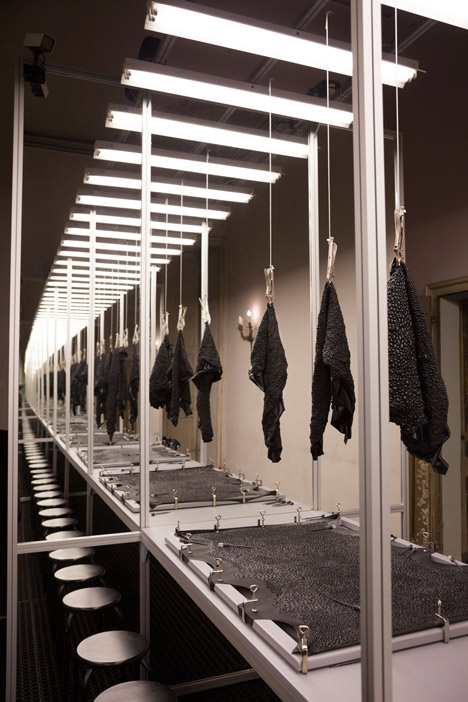
The Work with me People project was originally created for MU Eindhoven, after the gallery invited Hess to install a "production line" focussed on the creation of fabric for his designs.
"Work With Me People refers to the discrepancy between, on the one hand, the post-Fordian creative industry, and on the other the huge amount of work required to sustain it," said Hess in a statement. "The innovative format of the project offers insight into the production process of couture textiles."
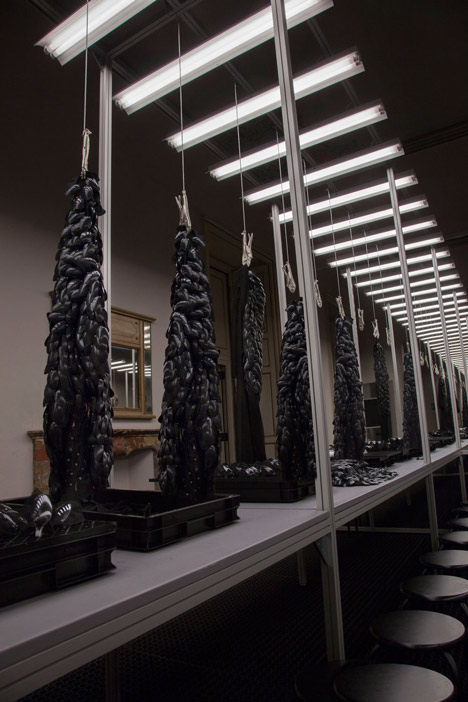
Originally shown in 2012 as part of Dutch Design Week, the project relied on the input of passers by who became voluntary contributors by adding elements to fabric at workstations along the production bench.
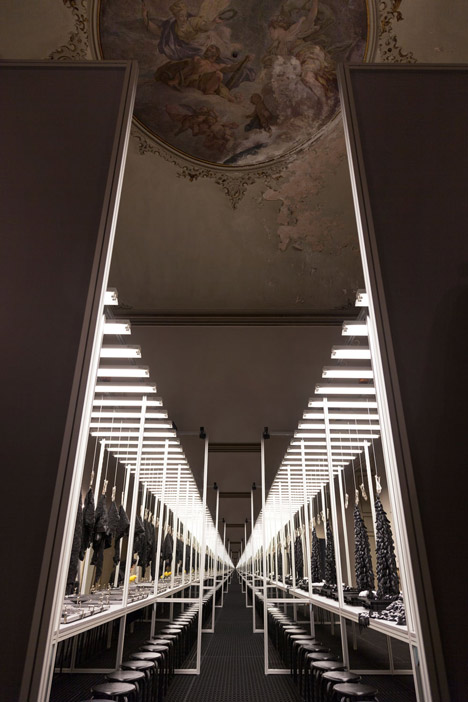
An iteration of the original installation called Work with me People III was installed as part of Atelier Clerici, a series of experimental exhibits curated by Space caviar founder Joseph Grima at Palazzo Clerici in Milan earlier this month.
Centred around the production of two textiles, visitors to the exhibition were recruited as volunteer contributors under the supervision of Hess' team. As each visitor performed their task slightly differently at different workstations, the end result was a unique fabric.
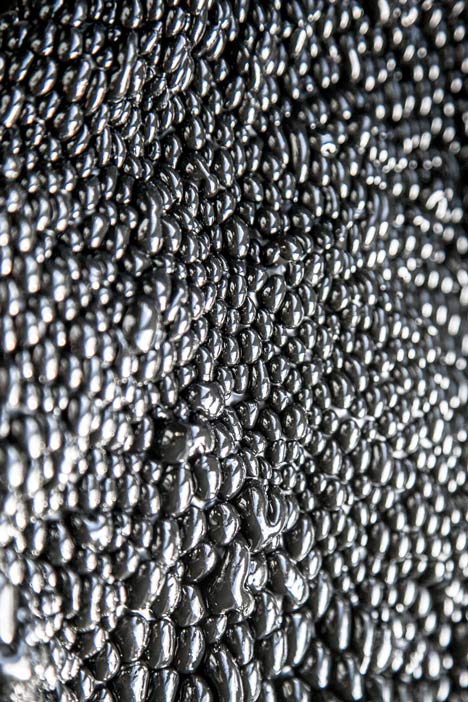
A bubbly-surfaced rubber material was created by stretching sheets of black latex and encouraging the volunteers to drip liquid latex onto the taut surface. Once the drops had dried, the latex sheets were released and returned to their original dimensions while the dots retained their size, creating a tension in the rubber and a distorted surface.
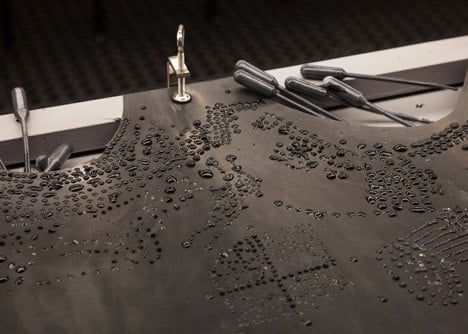
The other fabric, which appears to be made up of overlapping mussel shells, is made from individual pailettes created by visitors to the installation who layered two small pieces of mesh onto a spoon to form a moire effect.
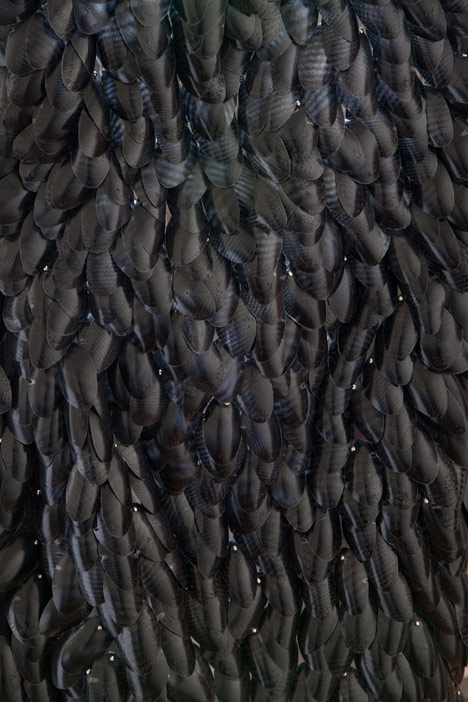
Glue was then used to seal the two layers together, with the spoon acting as a mould for the final shape. Once the glue was set, the fabric was removed from the spoon and the excess cut away. Each shell shape was attached to another piece of fabric.
Hess is known for his unusual use of materials to create textiles, garments and wearable artworks that appear futuristic but rely on labour-intensive materials and construction.